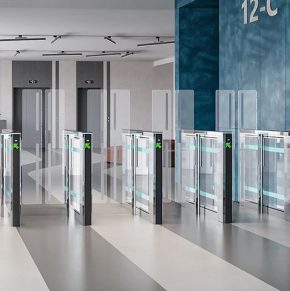
The impact of roof light area on light levels, energy costs and CO2 emissions
Correctly specified rooflights save energy and reduce CO2 emissions, making rooflights crucial to meeting Part L of The Building Regulations covering the Conservation of Fuel & Power and the equivalent regional regulations.
According to research carried out by De Montfort University’s Institute of Energy and Sustainable Development, minimal losses in thermal insulation are greatly off set by energy savings resulting from reduced demand for electric lighting – the greater the rooflight area the greater the potential savings. Although, there is a limit before overheating may become and issue, therefore an optimum area must be identified.
Judgement is required on a project by project bases as there is never a specific solution in respect of rooflight area. NARM supplies data for different building locations for rooflights with varying degrees of light transmission and for different daily time windows.
The first consideration in establishing roofights area, is the use of the building. As a typical example, in retail and manufacturing areas, the recommended light level is 500 Lux.
The required light level will be provided by natural light for more hours if the rooflight area is larger. Therefore, establishing the appropriate rooflight area is the next point to consider. As a consequence, during these hours, no electric lighting is needed, making this a crucial factor affecting energy and emissions reductions.
The graph above demonstrates the way in which rooflight areas affect illumination levels. Therefore, for a single storey building located in London, for example, between the hours of 6am and 6pm daily, with rooflights providing 50% light transmission, as the rooflight are along the bottom of the graph increases, the given illumination level time is extended.
Moreover, if a building requires 500 Lux, you can see by the yellow line that with 10% rooflights, 500 Lux would be achieved for approximately 2000 hours and 46% of the working year. However, it should be noted that the savings will only be made if the lights are switched off during periods when they are not required. Subsequently, automatic lighting controls should be specified as part of the project.
Elmhurst Energy recently researched these figures and found that savings in running costs of up to £5.92/m2/yr, and savings of CO2 emissions up to 28.7kg CO2/m2/yr can be achieved, with results from industrial and retail buildings very consistent.
Therefore, the figures demonstrate the importance of correctly specifying rooflights as they will provide outstanding long-term returns on investment with short payback periods, as well as contributing to improved sustainability credentials for the building occupier.
For further information, please contact NARM using the contact details on our website, where you will be directed to the appropriate person.
Click here to visit The Rooflight Association's website
Visit Supplier's page
Latest news

17th April 2025
Nuaire shares expertise at Specifi Mechanical Services events in 2025
Indoor air quality and ventilation manufacturing specialist Nuaire is pleased to be exhibiting at the Specifi Mechanical Services events once again in 2025.
Posted in Air Conditioning, Articles, Building Industry Events, Building Industry News, Building Products & Structures, Building Services, Exhibitions and Conferences, Facility Management & Building Services, Heating, Ventilation and Air Conditioning - HVAC, Restoration & Refurbishment, Retrofit & Renovation
15th April 2025
West Fraser: CaberDek earns top marks from Home Counties carpentry specialist
A specialist carpentry sub-contractor covering housing sites across a large swathe of the Home Counties has come to value CaberDek from the West Fraser range for a variety of reasons: not least because the high quality panel product doesn’t destroy his operatives’ electric saws!
Posted in Articles, Building Industry News, Building Products & Structures, Building Systems, Case Studies, Restoration & Refurbishment, Retrofit & Renovation, Roofs, Timber Buildings and Timber Products, Wooden products
15th April 2025
GEZE: The Role of Access Control Systems in Enhancing Building Safety
Jane Elvins, Specification and Business Development Manager at GEZE UK, delves into the role of access control systems in enhancing building safety…
Posted in Access Control & Door Entry Systems, Architectural Ironmongery, Articles, Building Industry News, Building Products & Structures, Building Services, Doors, Facility Management & Building Services, Health & Safety, Restoration & Refurbishment, Retrofit & Renovation, Security and Fire Protection
11th April 2025
Don’t Do a Dave! It’s Time to Lock FIT Show 2025 in Your Calendar!
It’s that time again – FIT Show is back! You could be forgiven for thinking there won’t be much new to see when FIT Show returns to the NEC from 29 April – 1 May. Wrong!
Posted in Articles, Building Industry Events, Building Industry News, Building Products & Structures, Building Services, Continuing Professional Development (CPD's), Exhibitions and Conferences, Information Technology, Innovations & New Products, Restoration & Refurbishment, Retrofit & Renovation, Seminars, Training
 Sign up:
Sign up: 